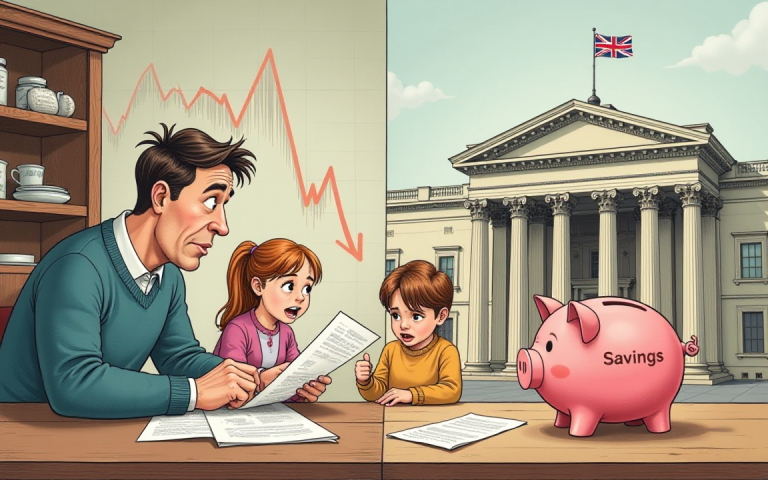One year into the Bank of England’s interest rate cutting cycle, UK households are yet to see meaningful financial relief.
Despite four rate reductions since July 2024 and expectations for a fifth this week, the overall burden on consumers has grown, underscoring the complexity of easing monetary policy amid lingering inflation and structural economic challenges.
Savings suffer as rate cuts outpace mortgage relief
Bloomberg analysis of Bank of England data shows British households are collectively £11 billion ($14.5 billion) worse off on an annual basis compared to a year ago.
The disparity stems from the fact that while banks and building societies quickly slashed interest rates on customer deposits, the benefits of lower mortgage rates have been slow to materialize.
Falling savings returns have cost households nearly £5 billion over the past year, affecting a wide range of accounts, including tax-free ISAs and various deposit types.
The effective interest rate on time deposits has declined by 0.4 percentage points since July 2024, while sight deposits have dropped 0.2 points — all amid a savings pool totaling around £1.8 trillion.
In contrast, mortgage and unsecured loan costs have increased by £6 billion annually.
Many homeowners are still locked into deals agreed at higher interest rates, with roughly one million borrowers currently paying above prevailing rates.
The Bank estimates these individuals may not benefit from cheaper borrowing until their current terms expire, a lag that could stretch over the next two years.
Persistent cost pressure despite easing cycle
The Bank of England’s benchmark rate stood at 5.25% in July 2024 — the highest level since the global financial crisis.
While the central bank has since lowered rates to 4.25%, and is expected to trim another 25 basis points to 4% this Thursday, the impact on financial conditions remains limited.
Consumers — who drive approximately 60% of the UK economy — appear cautious.
According to research group GfK, the UK’s savings index jumped in July to its highest reading since 2007, reflecting rising preferences for saving over spending.
This trend is compounded by fears of future tax increases following the fiscal measures introduced by Chancellor Rachel Reeves in April.
Economists note that the slow pace of rate reductions, coupled with their delayed transmission into real-world borrowing costs, blunts the intended stimulus.
ING’s James Smith commented that “the impact of rate cuts is going to be very gradual,” particularly in an environment of glacial policy easing.
Inflation and policy uncertainty cloud outlook
Adding to the challenge, inflation remains a pressing concern. Prices in July rose at a 17-month high — exceeding the BOE’s May forecasts — driven in part by energy costs and other one-off factors.
While these may not reflect persistent inflationary pressure, policymakers remain wary of secondary effects, particularly wage increases that could prolong price instability.
The effective interest rate on Britain’s £1.7 trillion mortgage stock has actually risen by nearly 0.2 percentage points over the past year, despite the central bank’s easing efforts.
That discrepancy illustrates how the legacy of past rate hikes continues to weigh on households.
Looking ahead, markets and analysts expect the BOE to continue its current pace of one rate cut per quarter, bringing the policy rate down to around 3.5% by spring 2026.
But with inflation still elevated and consumer sentiment subdued, the monetary policy path may offer limited short-term relief for struggling households.
The post BOE rate cuts offer little relief as UK households face mounting financial strain appeared first on Invezz

